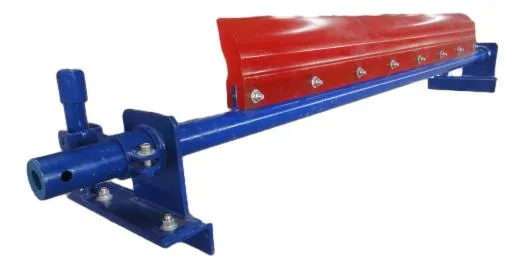 Afrikaans
Afrikaans  Albanian
Albanian  Amharic
Amharic  Arabic
Arabic  Armenian
Armenian  Azerbaijani
Azerbaijani  Basque
Basque  Belarusian
Belarusian  Bengali
Bengali  Bosnian
Bosnian  Bulgarian
Bulgarian  Catalan
Catalan  Cebuano
Cebuano  Corsican
Corsican  Croatian
Croatian  Czech
Czech  Danish
Danish  Dutch
Dutch  English
English  Esperanto
Esperanto  Estonian
Estonian  Finnish
Finnish  French
French  Frisian
Frisian  Galician
Galician  Georgian
Georgian  German
German  Greek
Greek  Gujarati
Gujarati  Haitian Creole
Haitian Creole  hausa
hausa  hawaiian
hawaiian  Hebrew
Hebrew  Hindi
Hindi  Miao
Miao  Hungarian
Hungarian  Icelandic
Icelandic  igbo
igbo  Indonesian
Indonesian  irish
irish  Italian
Italian  Japanese
Japanese  Javanese
Javanese  Kannada
Kannada  kazakh
kazakh  Khmer
Khmer  Rwandese
Rwandese  Korean
Korean  Kurdish
Kurdish  Kyrgyz
Kyrgyz  Lao
Lao  Latin
Latin  Latvian
Latvian  Lithuanian
Lithuanian  Luxembourgish
Luxembourgish  Macedonian
Macedonian  Malgashi
Malgashi  Malay
Malay  Malayalam
Malayalam  Maltese
Maltese  Maori
Maori  Marathi
Marathi  Mongolian
Mongolian  Myanmar
Myanmar  Nepali
Nepali  Norwegian
Norwegian  Norwegian
Norwegian  Occitan
Occitan  Pashto
Pashto  Persian
Persian  Polish
Polish  Portuguese
Portuguese  Punjabi
Punjabi  Romanian
Romanian  Russian
Russian  Samoan
Samoan  Scottish Gaelic
Scottish Gaelic  Serbian
Serbian  Sesotho
Sesotho  Shona
Shona  Sindhi
Sindhi  Sinhala
Sinhala  Slovak
Slovak  Slovenian
Slovenian  Somali
Somali  Spanish
Spanish  Sundanese
Sundanese  Swahili
Swahili  Swedish
Swedish  Tagalog
Tagalog  Tajik
Tajik  Tamil
Tamil  Tatar
Tatar  Telugu
Telugu  Thai
Thai  Turkish
Turkish  Turkmen
Turkmen  Ukrainian
Ukrainian  Urdu
Urdu  Uighur
Uighur  Uzbek
Uzbek  Vietnamese
Vietnamese  Welsh
Welsh  Bantu
Bantu  Yiddish
Yiddish  Yoruba
Yoruba  Zulu
Zulu Efficient Conveyor Systems for Streamlined Assembly Line Processes and Operations
The Importance of Conveyor Assembly in Modern Manufacturing
In the landscape of modern manufacturing, conveyor assembly systems stand out as pivotal components that enhance efficiency, productivity, and safety. As industries around the world strive to meet increasing demand while maintaining high quality standards, conveyor systems have proven to be invaluable assets. This article delves into the significance of conveyor assembly, its components, advantages, and future trends in this dynamic field.
Understanding Conveyor Assembly
Conveyor assembly refers to the use of conveyor systems to facilitate the movement of materials and products through various stages of the manufacturing or assembly process. These systems can range from simple belt conveyors to complex automated solutions that incorporate robotics and computer systems. At their core, conveyor assemblies are designed to streamline workflows, minimize manual labor, and reduce the risk of errors.
Components of Conveyor Systems
A typical conveyor assembly system comprises several key components
1. Conveyor Belts The backbone of any conveyor system, belts are designed to move materials from one point to another. They can be made from various materials, including rubber, metal, or plastic, tailored to suit the specific needs of the manufacturing process.
2. Drive Motors These motors power the conveyor system, providing the necessary force to move the belts. They can be electric or pneumatic, depending on the requirements of the assembly line.
3. Rollers and Idlers These support the conveyor belt and help reduce friction, ensuring smooth movement. They play a crucial role in the overall efficiency of the system.
4. Sensors and Controls Modern conveyor systems often incorporate sensors and control systems that allow for automated monitoring and adjustments. This technology enables real-time data collection, which can lead to significant improvements in productivity and maintenance.
5. Safety Features Given the potential hazards associated with conveyor systems, safety features such as emergency stops, guards, and alarms are essential. These elements help protect workers and ensure compliance with safety regulations.
Advantages of Conveyor Assembly
conveyor assembly

The benefits of implementing conveyor assembly systems are manifold
- Increased Efficiency Conveyor systems significantly reduce the time required to move materials between different stages of production. This streamlining of processes can lead to enhanced throughput and reduced bottlenecks.
- Labor Savings By automating the movement of materials, businesses can optimize labor costs. Workers can focus on higher-value tasks, such as quality control and assembly, rather than physical material handling.
- Improved Safety Conveyor systems minimize the risk of workplace injuries. By reducing the need for manual lifting and moving of heavy materials, the possibility of strains and accidents decreases significantly.
- Flexibility Modern conveyor systems are highly adaptable. They can be configured to meet the specific needs of various manufacturing processes, making them suitable for a wide range of industries.
- Enhanced Quality Control Automated systems can be equipped with sensors that detect defects or irregularities in products as they move along the assembly line. This real-time oversight allows for immediate corrective actions, ensuring that quality standards are met.
Future Trends in Conveyor Assembly
As technology continues to evolve, so too do conveyor assembly systems. Emerging trends include the integration of artificial intelligence (AI) and machine learning, which can improve predictive maintenance and operational efficiency. Furthermore, the rise of the Internet of Things (IoT) allows for smarter conveyor systems that can communicate with other machinery and systems in real-time, leading to holistic manufacturing solutions.
In addition, sustainability is becoming a significant focus in the design of conveyor systems. Manufacturers are increasingly looking for energy-efficient solutions and materials that reduce environmental impact.
Conclusion
In summary, conveyor assembly systems are integral to the efficiency and safety of modern manufacturing processes. By understanding the components, advantages, and emerging trends associated with these systems, businesses can better leverage technology to optimize their operations. As industries continue to evolve, the role of conveyor systems will undoubtedly expand, further cementing their importance in the realm of manufacturing.
-
Revolutionizing Conveyor Reliability with Advanced Rubber Lagging PulleysNewsJul.22,2025
-
Powering Precision and Durability with Expert Manufacturers of Conveyor ComponentsNewsJul.22,2025
-
Optimizing Conveyor Systems with Advanced Conveyor AccessoriesNewsJul.22,2025
-
Maximize Conveyor Efficiency with Quality Conveyor Idler PulleysNewsJul.22,2025
-
Future-Proof Your Conveyor System with High-Performance Polyurethane RollerNewsJul.22,2025
-
Driving Efficiency Forward with Quality Idlers and RollersNewsJul.22,2025





























